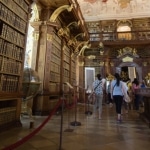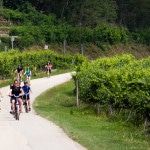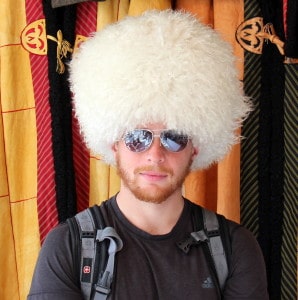Klosterneuburg Stift:
The Vienna Monastery you
SHOULD be Visiting.
Like most wine-drinking religion-enthusiasts, you’ll probably visit some sort of historic monastic abbey if you’re spending more than just a few days in Vienna. They have religion and culture, after all, including the sort of culture that leads to fermentation and eventually delicious monk-wrought wines. For most travelers, this will likely be the Melk Abbey way outside of Vienna at the end of the Wachau Valley. A closer and better option, however, is just outside of town on the edge of the Vienna Woods: Klosterneuburg.
Though it may look from the exterior like just another centuries old monastery in the heart of Central Europe, this belies the history and importance of the role Klosterneuburg has played since well before the ascendancy of the House of Hapsburg to the head of the Austro-Hungarian Empire. A look from the outside would also miss, of course, the fact that the Monastery is stunningly beautiful on the inside and well worth the time to explore.
To be sure, the most accessible theme from which to develop an understanding of Klosterneuburg Stift is that of religion. Since its founding as an Augustine Monastery in 1311, Kosterneuburg has played an important role in the development of theology and academics in Lower Austria. With a strong connection to its founder St. Leopold, the patron state of both Vienna and of Austria itself, Klosterneuburg still holds several reliquaries connected to him.
Indeed, as the story goes Leopold (then a local ruler known as Leopold the Good) had just been married when his new bride’s wedding veil was torn away by the wind and whisked off into the forest. Unable to find it after a tireless search, Leopold made a solemn promise to build a monastery on the spot where it was found. Several years later while riding through the forest, he found the long-lost veil hanging in pristine condition from an elderberry tree on the site of what would become Klosterneuburg Monastery.
A number of important pieces of religious art are kept at Klosterneuburg, the most famous which is the Verdun Altar in the Leopold Chapel. Its three rows of detailed engravings describe moments from the Old Testament, Life of Jesus, and New Testament as a testament (ahem) to the complementary nature of the books themselves. The product of over ten years of work by the goldsmith Nicholas of Verdun, the style and skill noticeably change in the course of the design (much like the architecture of Klosterneuburg itself). When you finally have the chance to press up to the glass and get as close as circumstances allow, the ten or fifteen minutes you can spend in the room are hardly enough to really even properly inspect all the different stories represented.
Though the Verdun Altar is the most famous and undoubtedly most valuable piece (gold, after all) in the Klosterneuburg religious artwork collections, it is by no means the only one worthy of note. Wooden pietas front displays featuring statues of all your favorite Disciples, while stained glass stands throughout as another beautiful method of communicating religious history and parables in a time when the average worshipper would have had limited access to the written word.
Particularly interesting and unusual is the Tree of Life, a candelabrum that manages to incorporate influences from Jewish religious tradition into a distinctly Christian atmosphere… perhaps a statement that varied belief systems can coexist?
Even for travelers with absolutely zero interest in religious history, however, Klosterneuburg is still a decent draw. The setting, on the flanks of the Leopoldsburg hill as it looks out over the Danube, is beautiful on its own. If I lived in the village, I expect there would be a lot of picnics in my weekly routine during the warm months. The architecture of the monastery is of interest too, with consecutive periods of construction and renovation all having conspired to create a Baroque/Gothic/Neoclassical hodgepodge. There’s even a treasury on site with religious relics and old vestments of the clergy and the impressive Holy Crown of Austria.
When it comes down to it, however, the average non-Catholic visitor will be much more like to have heard of heard of Klosterneuburg not for art, relics, or religion. Rather, for one specific important part of the Monastery’s history: Wine.
Mostly because of its extensive land holdings, the Klosterneuburg Stift is one of the largest wineries in all of Austria. Almost since the beginning, in 1114, the Monastery has been cultivating vineyards and producing wine on over 266 acres spread out over 4 different villages in the region. This is a major operation, as a walk through the 36m (118ft) deep cellar complex will attest.
Given the size and scope of the Klosterneuburg holdings, the monastery produces quite a variety of wines and all-natural fruit juices and even a couple of different flavors of brandies. After learning a bit about the history of the operation and flavor profiles of the different grape-growing regions in which the Monastery has land, you also have the opportunity to visit the Klosterneuburg Vinothek to try a few for yourself. Not to worry, when you inevitably find something delicious you’ll be able to buy it on the spot. We absolutely did. If you’re lucky enough to be based in the region, you can also replenish your stock from home at their online store. (Sadly for me, they deliver neither to Kyrgyzstan nor to America.)
The funniest thing is that, on the face of it at least, one of the most compelling arguments for visiting Klosterneuburg Stift instead of somewhere like the Melk Abbey is that its just so much closer and easier to get to. You could make a half-day thing out of it if you wanted. And yet, finally leaving the Monastery in the late afternoon, I hadn’t even made time to visit the amazing museum just down the road in the same village. Which means, I suppose, that another visit to Klosterneuburg is in order.
Should I start taking orders for wine now, or once I’m headed back?
Essential Information
Hours of Operation:
Open to the public 9:00 – 18:00, with guided tours running from 10:00 – 17:00. Some of the guided tours only happen a few times each day, to try to arrive no later than 11:00 if there’s something specific you want to see.
Admission:
Klosterneuburg Stift offers a number of guided and self-guided tours. The Imperial Apartments and Treasury are self-guided with an audioguide. To visit the Monastery or Wine Cellars, you’ll have to take a guide. The tours are primarily in German, so you might get stuck with an audioguide or you may get lucky and have a guide who is willing to make it bilingual. Additionally, to celebrate the 900th (!) anniversary of the monastery they’re offering a ‘Here and Now’ tour which is also guided and in German.A ticket for any one of these costs €10.50, with a €1.50 discount if you have the Vienna Card. A combined ticket for all of these is €16.50, also with a €1 Vienna Card discount. I think the Wine Cellars were probably the most interesting part, and the Monastery Tour a close second. I was happy to walk through the Treasury in between these two, but wouldn’t go all the way to Klosterneuburg just to see it.
Transportation:
You can take the S40 train or Bus 239 to from Heiligenstadt to Klosterneuburg, and if you have a Vienna Card this should be included in your transit pass (ask for a sticker once you get to the Abbey). Otherwise, a bus for the (supposedly amazing) Essl Museum leaves from Albertinaplatz in central Vienna at 10a, 12p, 2p, and 4p. If you’re planning to visit the museum, the bus ride is free. From there, the walk to the Klosterneuburg Stift is only about ten minutes.




















